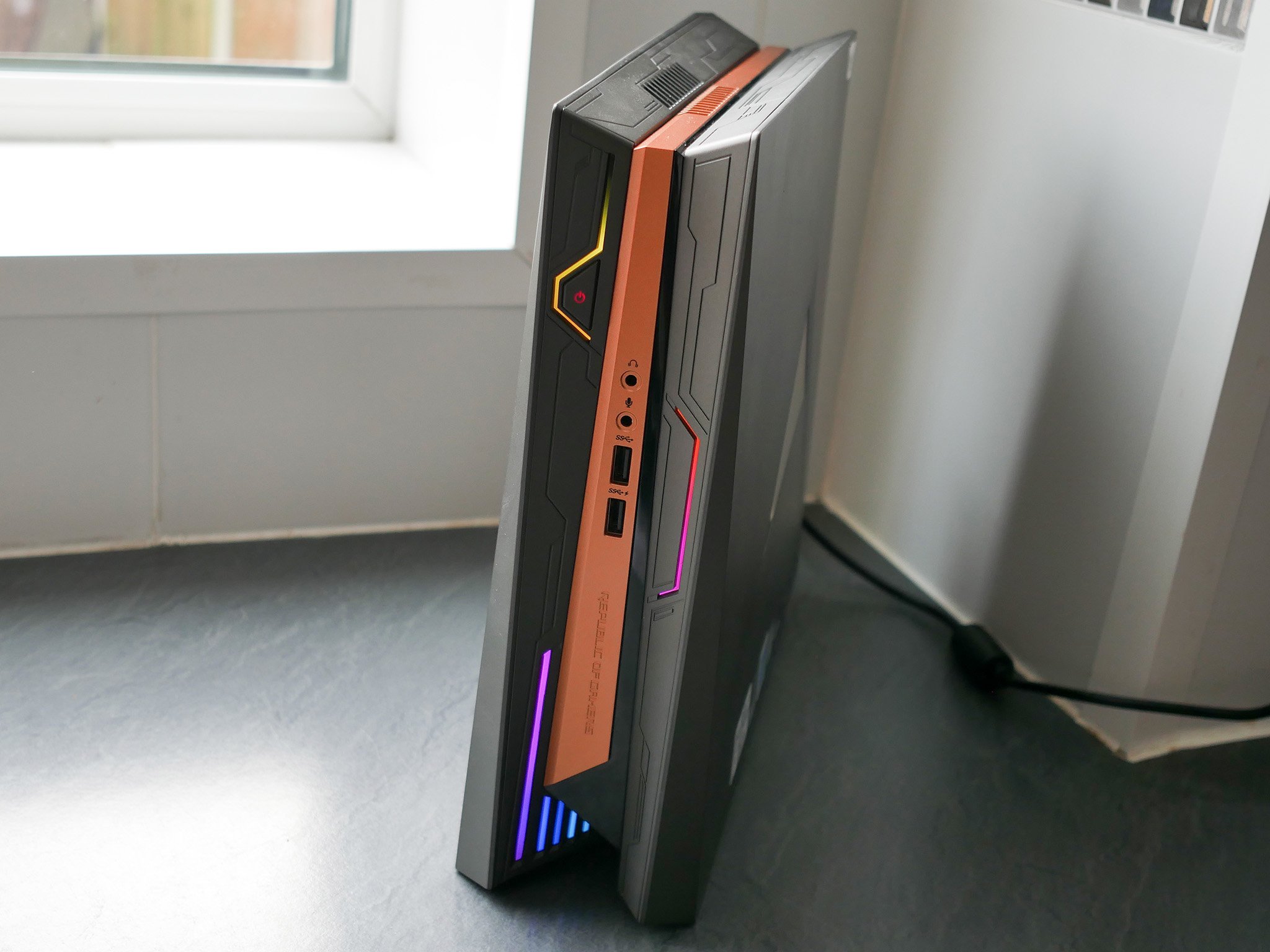ASUS isn't new to making small form-factor gaming PCs. In the past, we've taken a look at the G20, but the GR8 II goes further in an even smaller package.
Making a small gaming PC isn't simple. Internals get hot under the stress imparted by playing games, with airflow and cooling being crucial. If you make the box it all sits in smaller, you lose space for both of those to exist at more efficient levels.
So how do you stuff a proper gaming PC into something like the GR8 II? This PC is very clever.
About this review
This review was conducted using an ASUS GR8 II unit loaned to Windows Central. Specs are as detailed below, and all review testing was conducted on the latest production build of Windows 10. It was connected to a Dell S2417DG monitor at 1440p, but any resolution changes for benchmarking purposes are detailed below.
ASUS GR8 II powerful compact specs
| Category | Specification |
|---|---|
| Software | Windows 10 Home 64-bit |
| Processor | Intel Core i5-7400 |
| Graphics | NVIDIA GTX 1060 3GB |
| Storage | 1TB HDD |
| Memory | 8GB 2133MHz DDR4 |
| Ports | 2 x HDMI, 3.5mm headset jack, microphone input, 5 x USB 3.0, USB-C, DisplayPort, Ethernet, Optical S/PDIF out, 3.5mm output (speakers or headphones), Kensington lock |
| Power supply | 230W |
| Dimensions | 3.46 x 11.77 x 11.07 inches |
| Price | $799 |
ASUS GR8 II - hardware and design
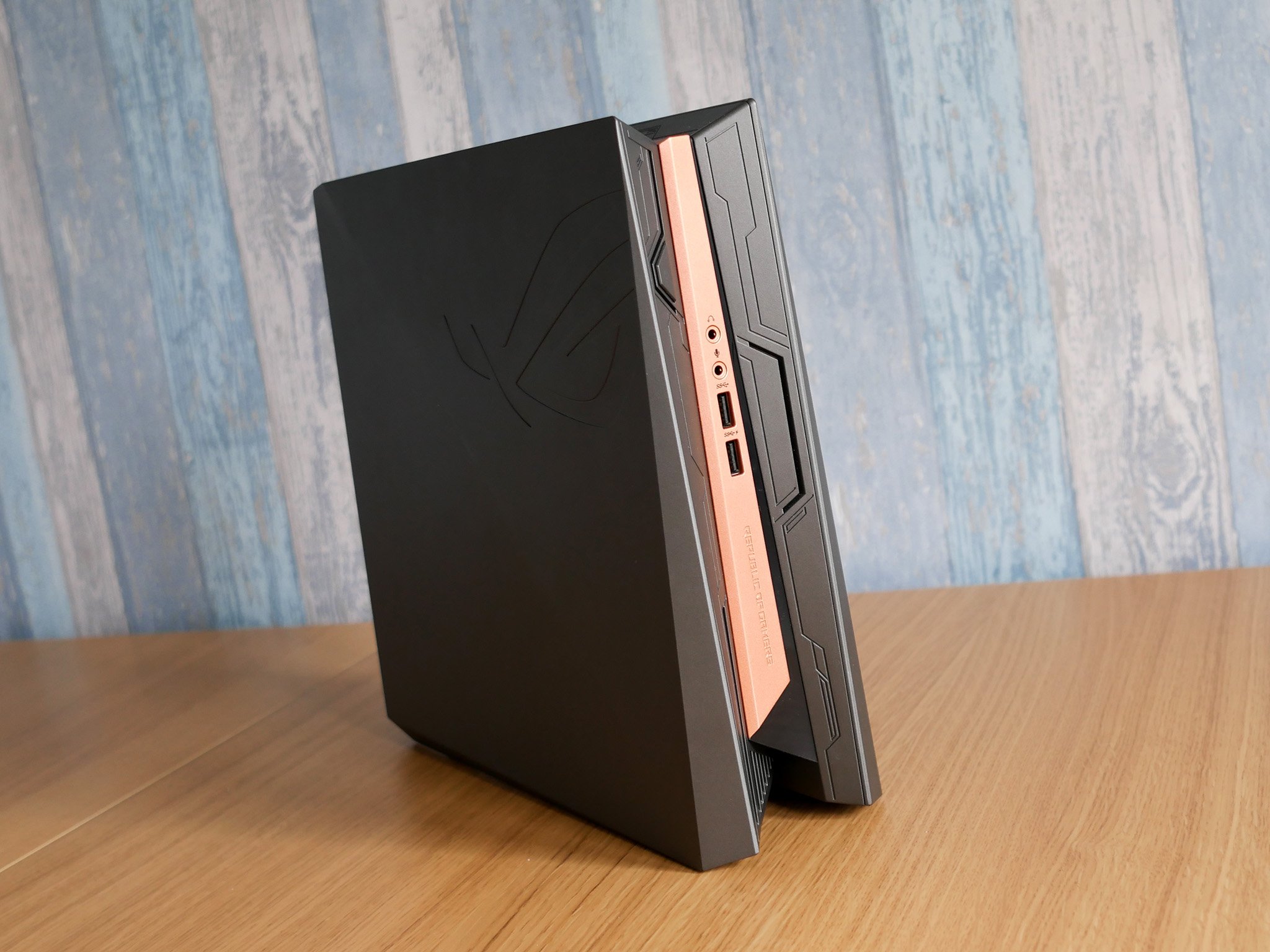
The GR8 II is a little smaller than an Xbox One S, despite containing some fairly beefy components inside. The model we have here is the entry level, with a 3GB GTX 1060 GPU from NVIDIA and a 7th-generation Core i5-7400 processor from Intel. There is a model available also with the 6GB version of the GTX 1060.
Inside you can get a Core i7 with a GTX 1060 and 32GB of RAM.
What this isn't doing is using off the shelf parts. The motherboard is split in two and stacked on top of the other inside the chassis, while the graphics card is chambered off with blower style cooling to exhaust the heat from the rear of the PC. The GTX 1060 is a reduced size card, with only three display outputs and sports a sized-down exhaust vent compared to the reference designs.
Even so, the specs list goes up to a Core i7-7700 and 32GB of RAM which is impressive given the 4-liter capacity, and you're able to have two storage drives in here thanks to the m.2 SSD slot, which on ours is vacant. The other drive is a standard 2.5-inch affair.
We've got a (rather slow) 1TB HDD, but it can just as easily be a regular SSD. Getting inside the GR8 II is as easy as popping off a plastic trim on the top, undoing three screws, then one more on the base, before the side panel slides completely away.
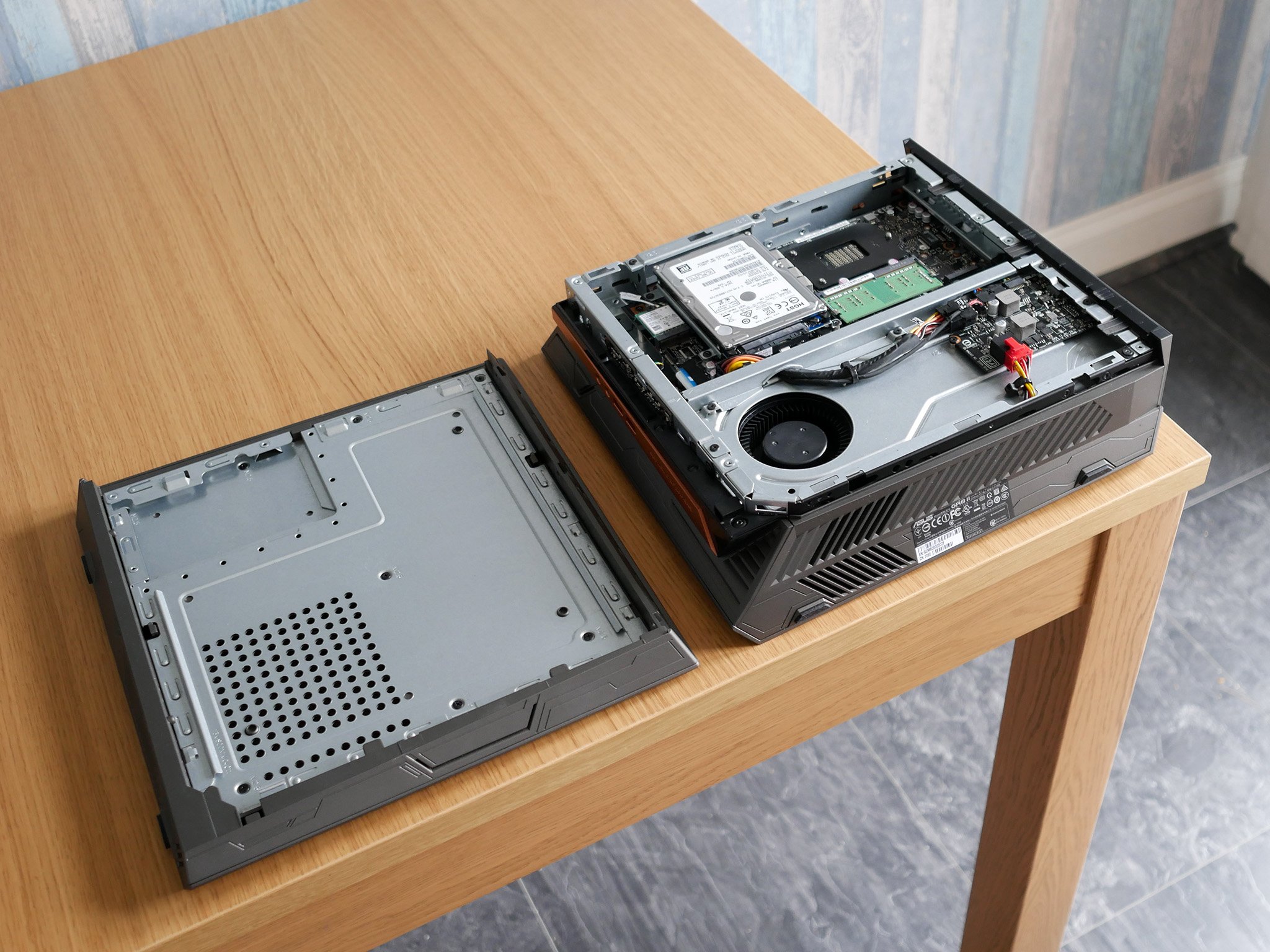
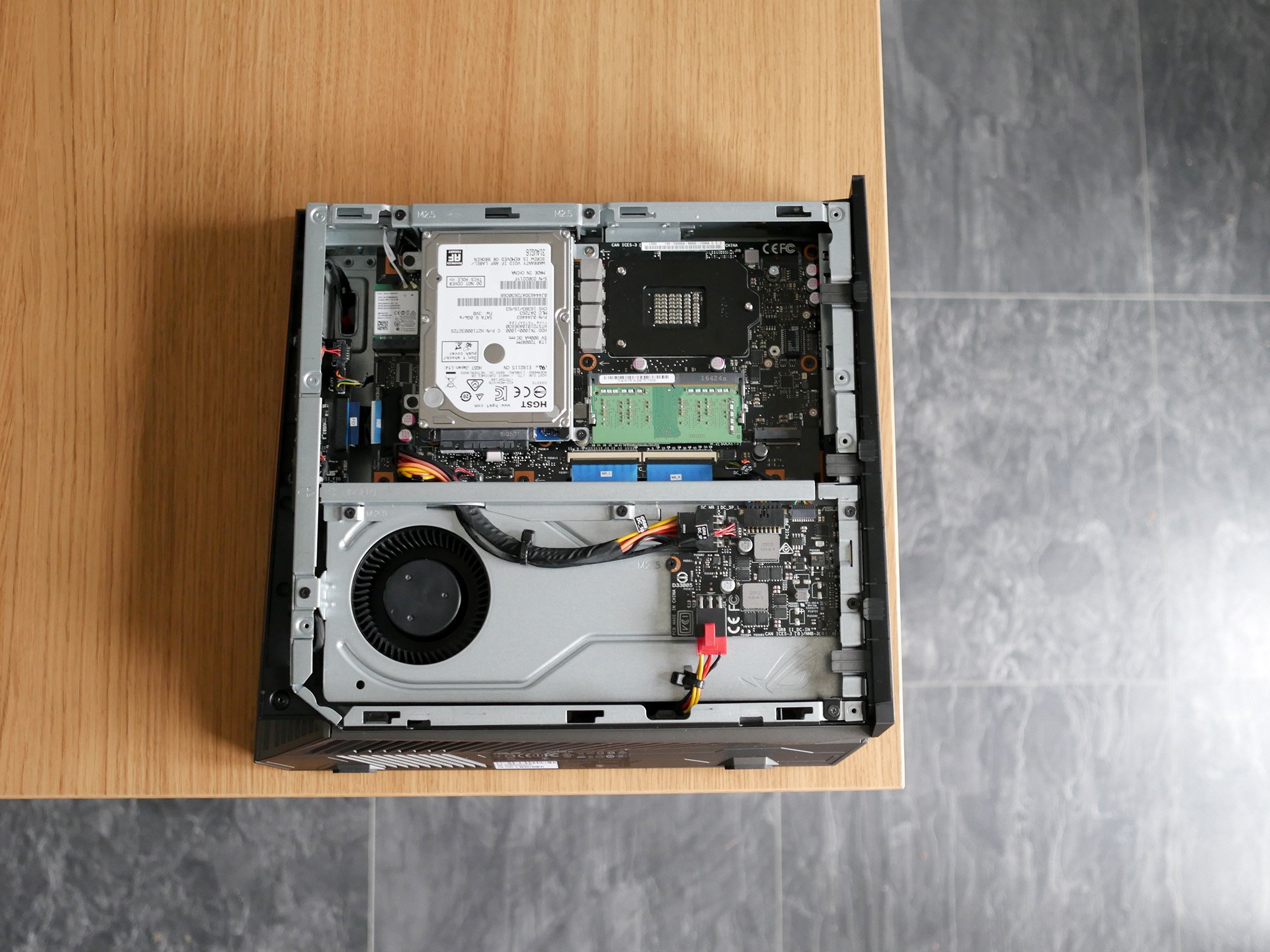
The GR8 II is an impressive thing inside, more so for its compartment-based design than what's actually in there. It means ASUS is able to squeeze high-performance parts into a very small chassis. It's not the most upgradeable, but there's full access to everything if you're feeling brave.
When you pop the lid back on you know you're staring back at a gaming PC. The ROG division at ASUS isn't particularly subtle in its product design, and the GR8 II screams at you that it's a gaming PC. If you don't believe it, then the Aura RGB lighting on the front panel will address lingering doubts.
Getting inside the GR8 II is a breeze, which is good, because you'll need an SSD if you don't have one.
Personally, I think it looks pretty good, but the aggressive styling could easily split opinion. Nevertheless, it's well equipped with connections, sporting a pair of USB 3.0 ports on the front alongside a headset and microphone jack, while around the back there are three more USB 3.0 ports, a USB-C port, Ethernet and three display outputs: One DisplayPort and a duo of HDMI outputs, all coming from the GPU.
The back of the GR8 II is even color coded to the rest of the machine. You're probably not looking at it very often, but hey, it isn't a mess like a lot of desktop PCs with just bare metal.
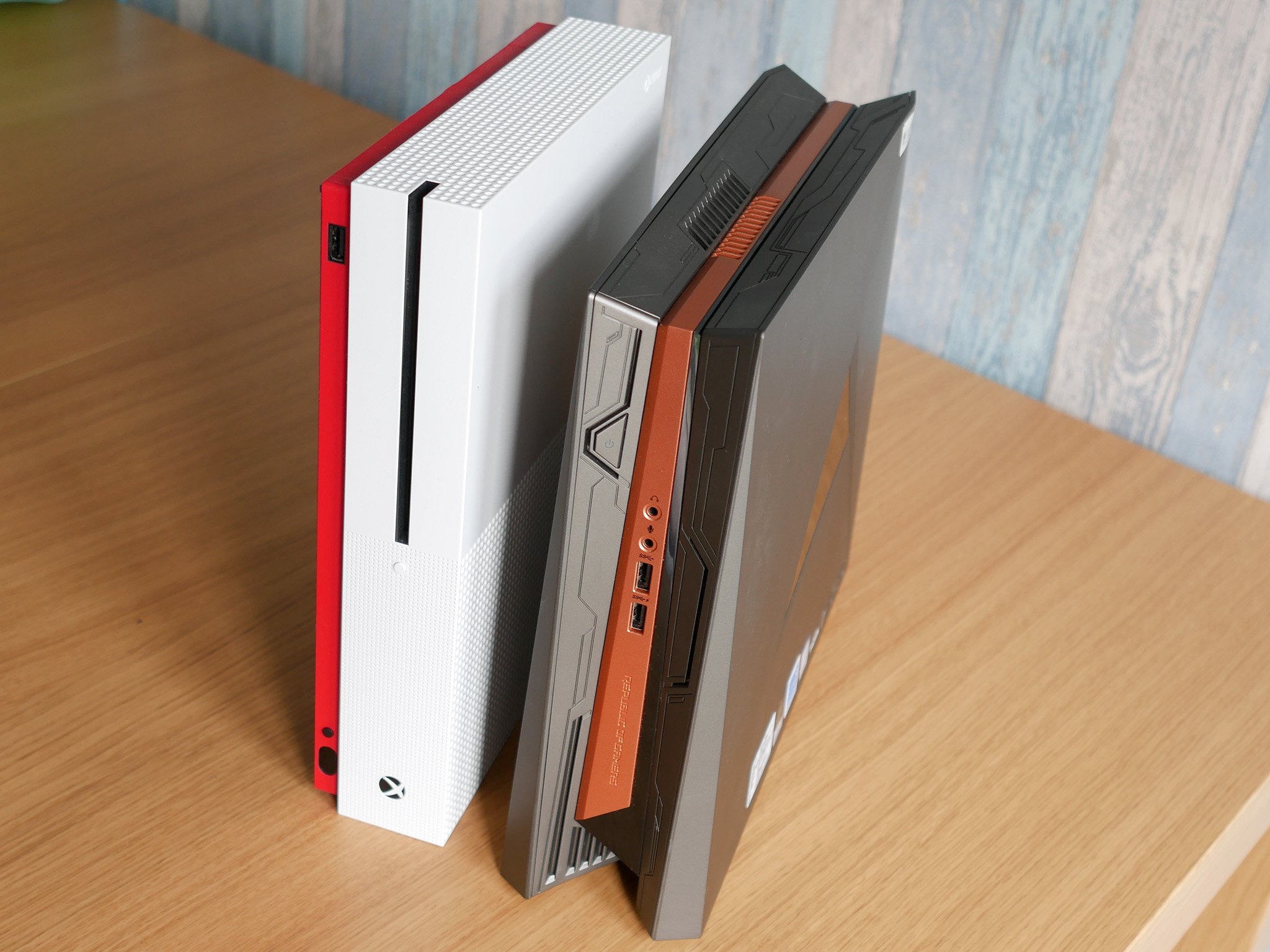
So, while the design will be a love/hate response, what ASUS has done with the chassis on the GR8 II is pretty remarkable. Essentially, you're able to get a high-end gaming PC into something about the size of the Xbox One S. An external (and large) 230W power brick helps with that quite a bit, but at least it only has one, unlike the G20 we looked at a while back.
Small gaming PCs are interesting to look at for little other than to see the clever tricks manufacturers use to squeeze all the hardware inside nothing more than a small box. ASUS hasn't been particularly revolutionary in the GR8 II, but it's still a very clever, thoughtful piece of hardware.
ASUS GR8 II - packing a punch
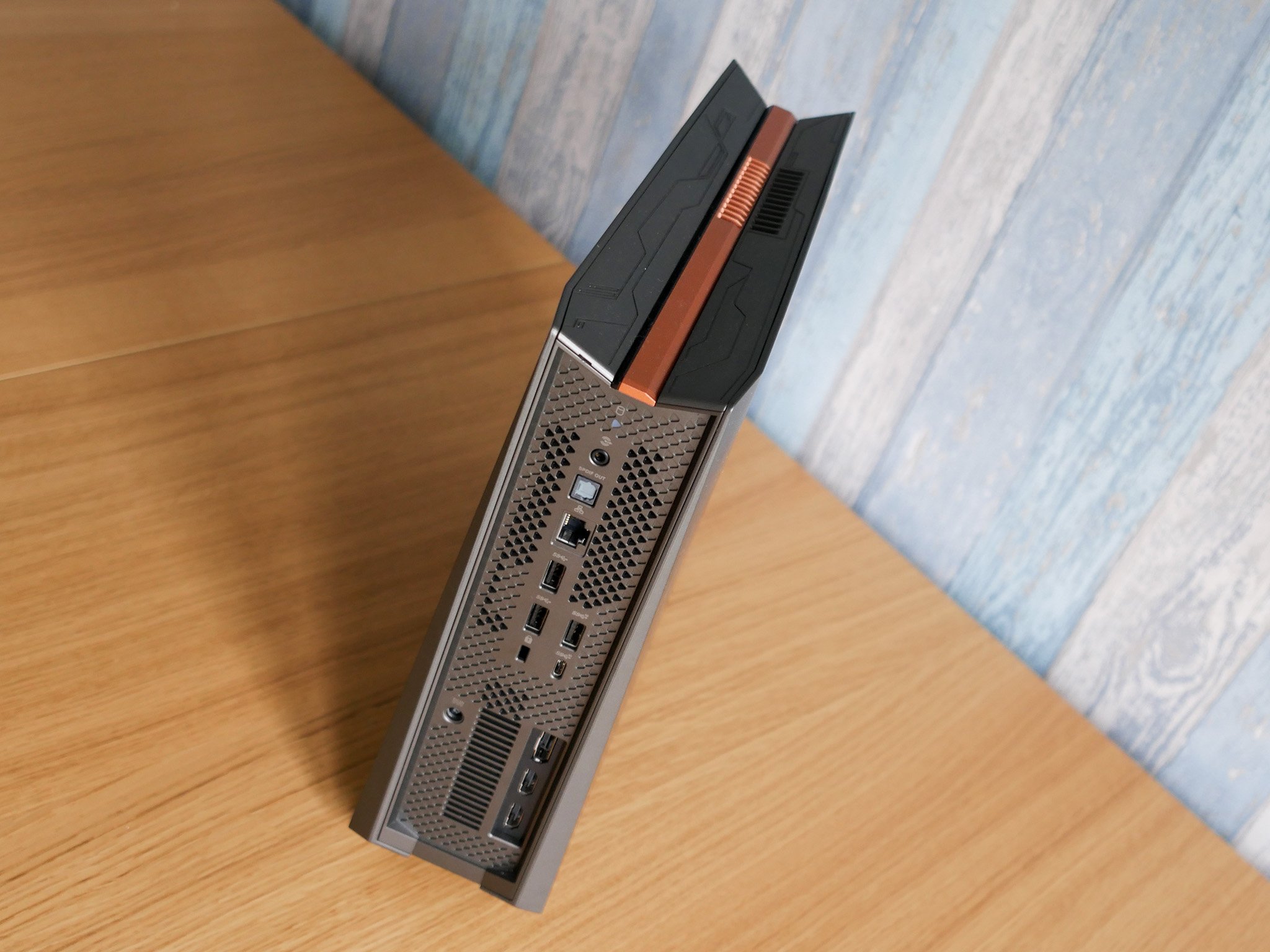
I'm going to start with the biggest limitation on the performance of the GR8 II in the spec we have here for testing: The hard drive. Because we have a solitary 1TB HDD inside, it's slow. Compared to any desktop or laptop with an SSD drive inside, the GR8 II is slow.
Sure, you can easily enough add an SSD boot drive and move your Windows installation over to it (and if you buy one without an SSD I recommend doing this immediately), but we can't test what isn't there.
CPU
Geekbench 4.0 Benchmarks (Higher is better)
| Device | CPU | Single core | Multi core |
|---|---|---|---|
| ASUS GR8 II | i5-7400 | 4,093 | 11,819 |
| Lenovo Legion Y720 | i7-7700HQ | 4,697 | 14,810 |
| Razer Blade Stealth | i7-7500U | 4,211 | 8,333 |
| Dell XPS 15 | i7-7700HQ | 4,503 | 13,587 |
| Razer Blade Pro | i7-6700HQ | 3,660 | 12,325 |
| Surface Laptop | i7-7660U | 4,677 | 9,538 |
The numbers show the bonus to having a quad-core processor compared to a dual-core in many of the laptops we've tested recently.
GPU
Geekbench 4.0 Graphics OpenCL (Higher is better)
| Device | Score |
|---|---|
| ASUS GR8 II GTX 1060 3GB | 126,311 |
| Razer Blade 14 GTX 1060 6GB | 139,603 |
| Surface Book GTX 965M | 63,029 |
| Surface Studio GTX 965M | 53,685 |
| ASUS Strix GL753 GTX 1050 | 76,007 |
The GTX 1060 is strong even in its 3GB form. It's vastly more powerful than any Intel graphics and sits where you'd expect compared to other devices with dedicated GPUs.
Storage
CrystalDiskMark (Higher is better)
| Device | Read | Write |
|---|---|---|
| ASUS GR8 II | 85.9 MB/s | 51.5 MB/s |
| Razer Blade (960 EVO) | 2,079 MB/s | 1809 MB/s |
| MacBook Pro 13 (2016) | 1,549 MB/s | 1,621 MB/s |
| Spectre x360 512 | 1,332 MB/s | 589 MB/s |
| XPS 13 (9360) 256 | 1,287 MB/s | 794 MB/s |
| Surface Book 1TB | 1,018 MB/s | 967 MB/s |
Don't buy this PC with only an HDD for storage. As the figures here show, you'll regret it.
The numbers tell enough of the story, especially comparing the quad-core processor and GTX 1060 graphics to laptops. But the storage is the real story, with sluggish performance across the board. Load times take an age, whether you're booting up Windows in the morning or opening some apps, there's a delay on everything.
Seriously, either spend more and get one with an SSD in it or add one yourself.
More: How to add an SSD to your Windows 10 PC
Back to the positives, and the GR8 II doesn't shape up too badly when it comes to gaming. This is the base model and so you're not going to be pedaling any 1440p resolution gaming nor are you able to configure ultra graphics settings, but it's still pretty powerful.
Here's how it fares in the 3DMark Fire Strike and Time Spy benchmarks:
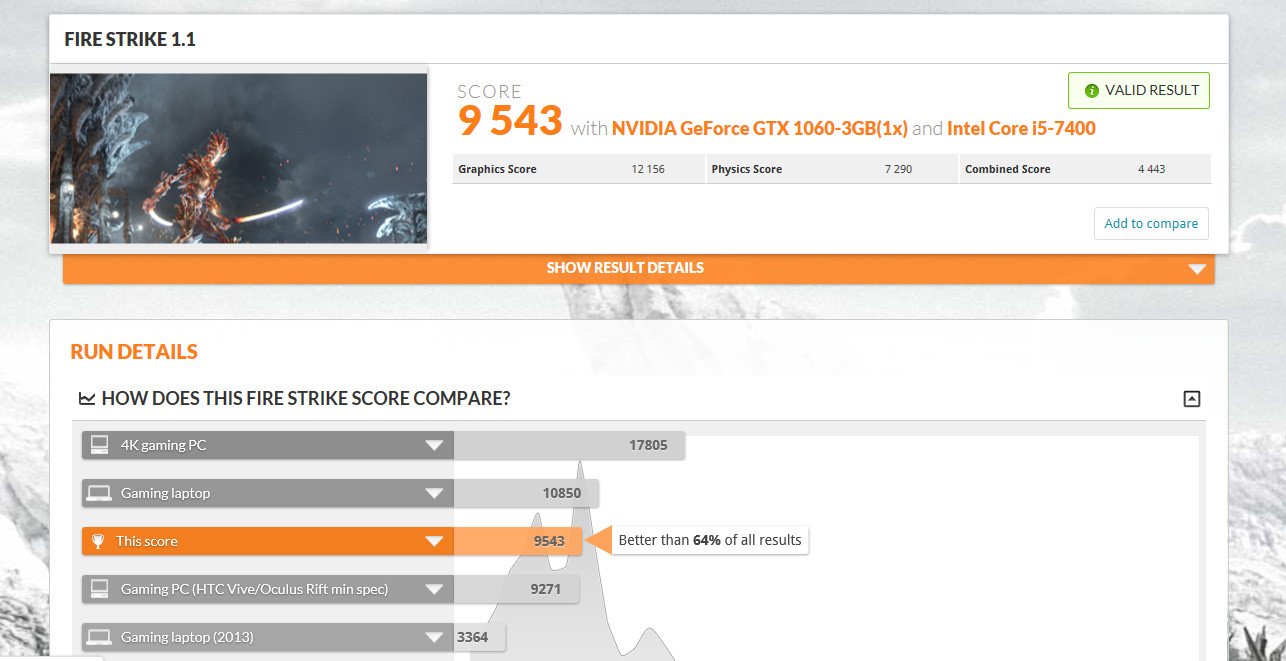
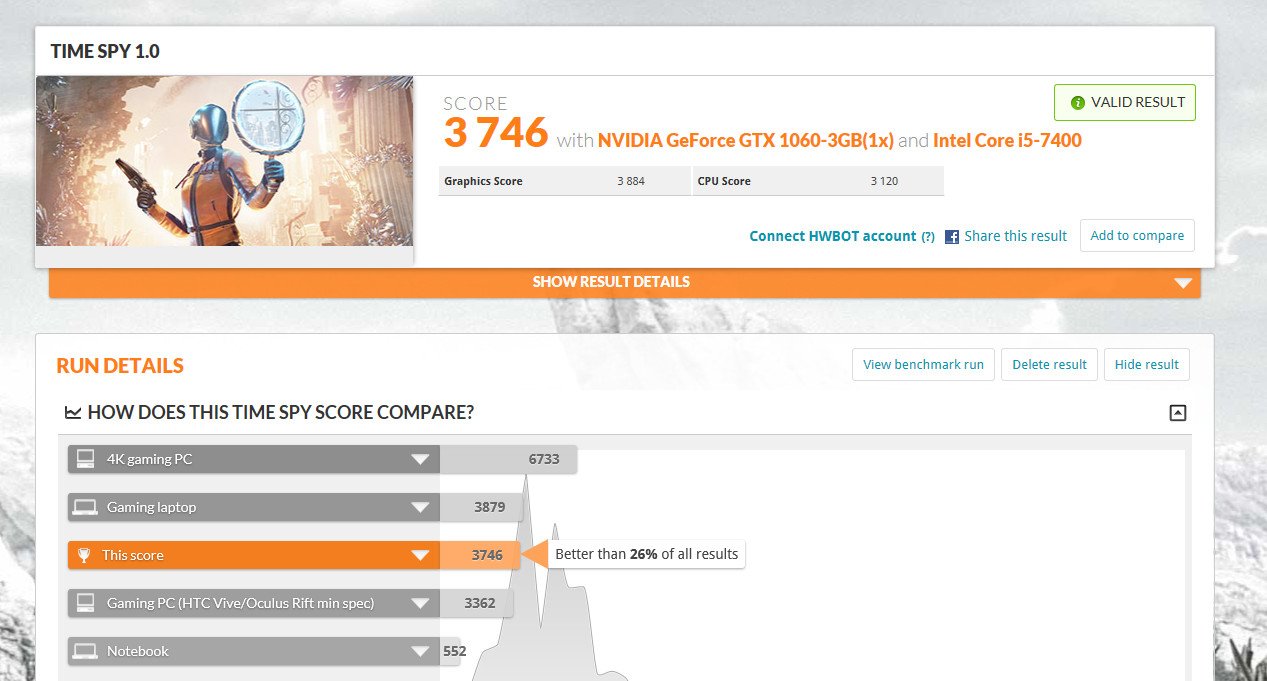
And in-game:
- Rise of the Tomb Raider - 59.6 FPS (High DX12)
- Grand Theft Auto V - 77.6 FPS (High)
Equally, it's fairly easy to hit 60 FPS in Forza Horizon 3 and Forza 7 by turning down a few settings. Even in its 3GB form, you can have a great gaming experience without sacrificing too much.
The GR8 II isn't hugely noisy, either. There's whine from the CPU cooler when you're pushing it, but the GPU is pretty quiet. Heat from the CPU cooler exhausts through the vents on the top of the PC, with cool air drawn in from the rear.
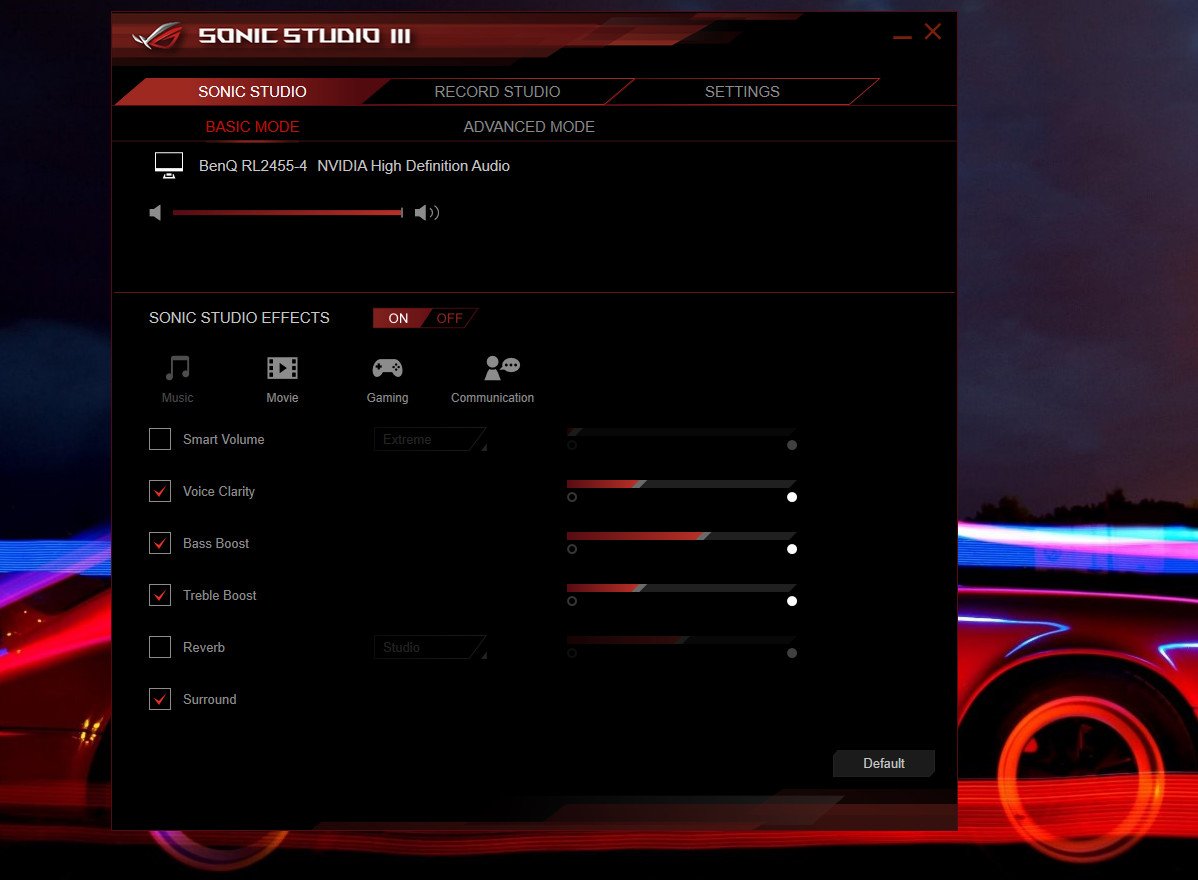
ASUS also includes some custom software on the GR8 II to help maximise your gaming experience. For once there also doesn't seem to be too much bloatware, either. The GameFirst IV app is there to help you maximize your network connections when gaming and the Aura app lets you customise the lighting on the front panel.
Praise the lord, there's not much bloatware.
The sound isn't forgotten either, with ASUS' own Sonic Master III on board and a companion app to tweak it to your liking. What I particularly like is that it allows you to set preferences by app as to whether you want the sound from headphones, speakers or through the HDMI output, which means you don't have to continually worry about changing default outputs.
It's nice to be able to set music to come out of the speakers while game audio comes out to a headset without having to change anything.
ASUS GR8 II - The bottom line
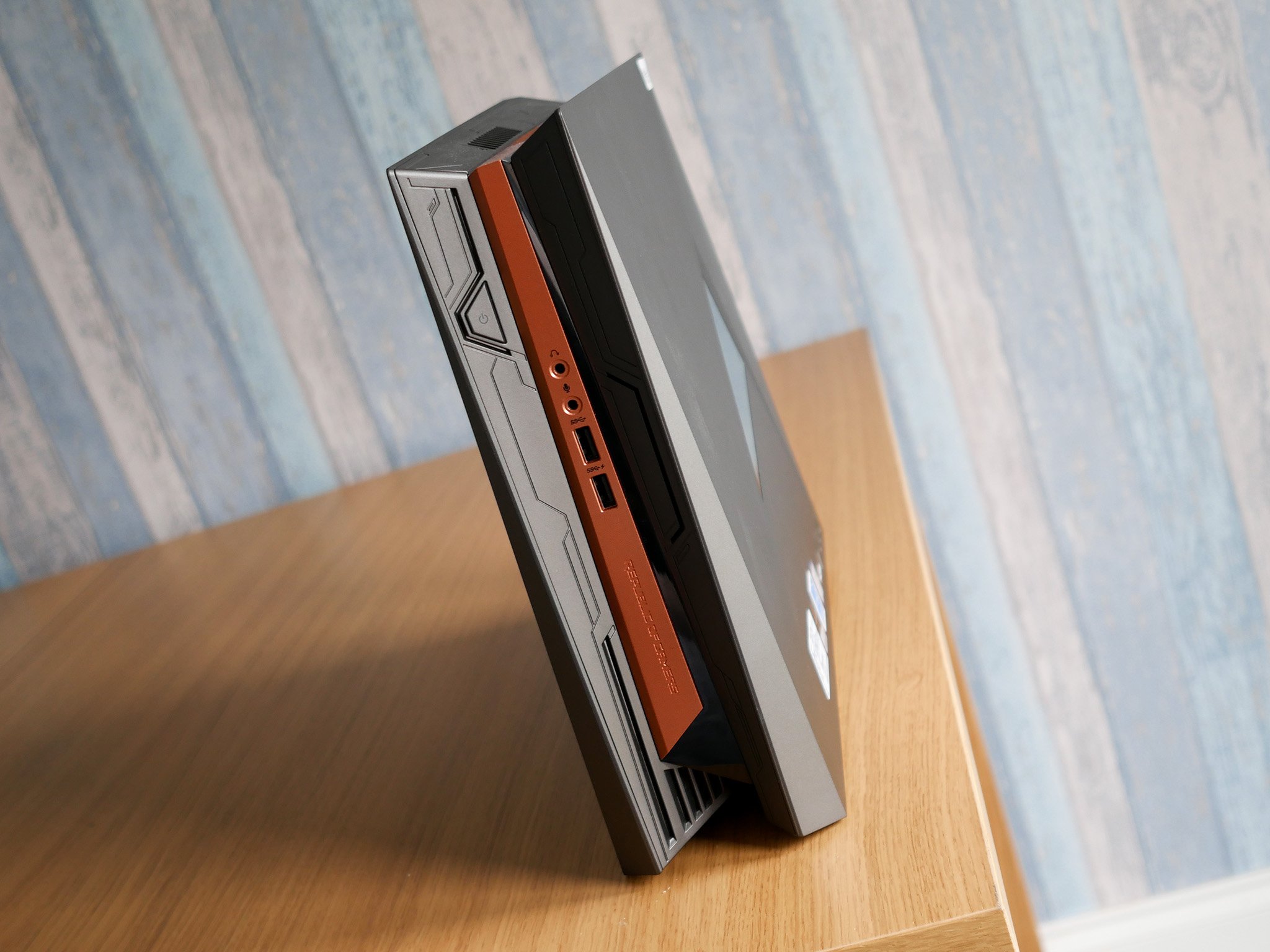
I have a fondness for small gaming PCs. I previously used an Alienware X51, a similarly clever, yet differently executed take on the form factor. ASUS isn't alone in creating space-saving gaming PCs, there are a number available, like the Corsair One, for example.
The GR8 II can't match some of the competition in outright performance, but it's still very capable and a worthwhile consideration if you like to game but don't have the space to devote to a huge PC. It'll sit happily on even the smallest of desks, looking impressive while it does.
It's fairly quiet under regular use, can play most anything you'll want to at 1080p without too much fuss and it doesn't completely run away with your wallet, either. The model we reviewed here is just $799.
The biggest complaint is the HDD-only spec that we were sent for review. No-one should buy this. Not at all. It slows down your whole experience and you're going to end up forking out for an SSD in the long run, so better to just get one straight away. It has a 7200RPM drive at least, but it's so, freaking, slow.
Pros:
- Small size but solid gaming performance.
- Easy to upgrade RAM and storage yourself.
- Plenty of ports.
- Attractive entry price of $799.
Cons:
- HDD-only version is slooooooow.
- CPU cooler whines.
I like the GR8 II, though. If you're the sort of person who still goes to good old-fashioned LAN parties or ever just needs to take your PC somewhere with you, there's a lot to be said for something this size. It'll go in any reasonable backpack and the power adapter while large still isn't any bigger than you'd get with a gaming laptop.
If there was one thing I'd do differently, it'd be offering a version with a seriously beefier GPU. The 3GB or 6GB GTX 1060 is pretty good, but can you imagine cramming a GTX 1080 in a small PC like this? Maybe for the GR8 III.

Richard Devine is a Managing Editor at Windows Central with over a decade of experience. A former Project Manager and long-term tech addict, he joined Mobile Nations in 2011 and has been found on Android Central and iMore as well as Windows Central. Currently, you'll find him steering the site's coverage of all manner of PC hardware and reviews. Find him on Mastodon at mstdn.social/@richdevine
